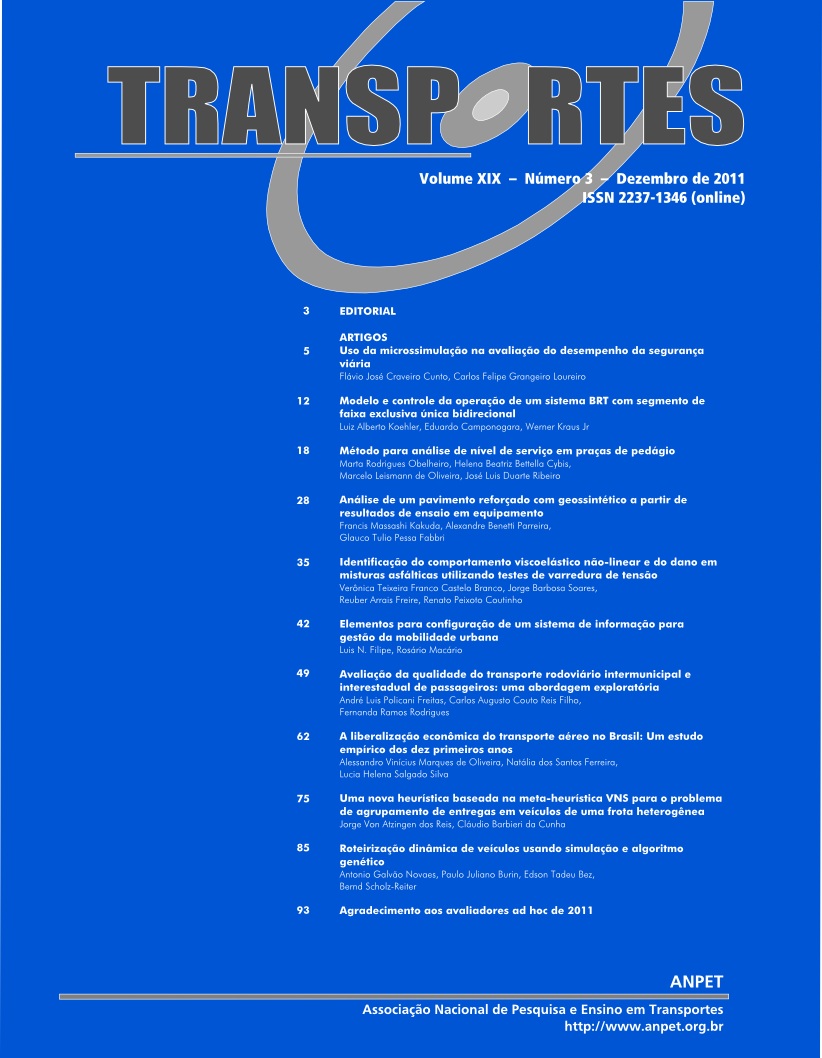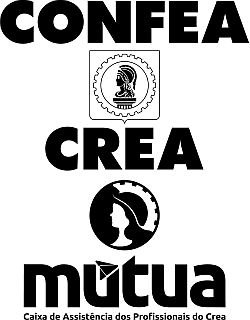Modelo e controle da operação de um sistema BRT com segmento de faixa exclusiva única bidirecional
DOI:
https://doi.org/10.14295/transportes.v19i3.528Resumo
Este trabalho apresenta o modelo e estratégia de controle de um sistema BRT (Bus Rapid Transit) que tem como principal característica a presença de segmento(s) de faixa exclusiva única para ambos os sentidos de deslocamento dos ônibus (segmentos bidirecionais). Este diferencial, dadas as restrições associadas ao alto grau de adensamento das áreas urbanas, permite uma menor ocupação de espaço físico e menor ocupação das vias convencionais por parte dos ônibus, podendo muitas vezes representar a viabilidade ou não da implementação de sistemas BRT. São apresentados o modelo e uma estratégia de controle em tempo real para operação do sistema BRT proposto, aqui denominado CIRSO (Controle Integrado de Retenção e Sequenciamento dos Ônibus). O modelo matemático utilizado é determinístico, representado por uma função custo e restrições, sendo as variáveis de controle o tempo ótimo de retenção dos ônibus nos pontos e o controle do sequenciamento dos ônibus através do(s) segmento(s) bidirecional(ais). Resultados de simulação mostram a viabilidade e eficiência do modelo do sistema BRT e da estratégia de controle CIRSO aqui propostos.
Palavras-chave: faixa exclusiva para ônibus, faixa bidirecional para ônibus, BRT, controle do espaçamento
Abstract: This paper presents a model and control strategy for a BRT (Bus Rapid Transit) system which has as its main distinguishing characteristic the presence of segments with only one exclusive lane for both directions of bus movement (bidirectional segments). This feature, given the constraints associated with high density urban areas, allows for a smaller physical footprint and lower occupancy of the conventional ways by buses and can often represent the only feasible alternative of the implementation of a BRT system. The model and a control strategy for real time operation of the proposed BRT system are presented, here called CIRSO (Integrated Control of Retention and Sequencing of the Buses). The mathematical model used is deterministic, represented by a cost function and constraints. The control variables are the optimum holding time of buses at stops and control of bus sequencing through the bidirectional segments. Simulation results show the feasibility and efficiency of the BRT system model and CIRSO control strategy here proposed.
Keywords: exclusive bus way, bidirectional bus lane, bus rapid transit, holding controlDownloads
Downloads
Publicado
Como Citar
Edição
Seção
Licença
Ao submeter um manuscrito para publicação neste periódico, todos os seus autores concordam, antecipada e irrestritamente, com os seguintes termos:
- Os autores mantém os direitos autorais e concedem à Transportes o direito de primeira publicação do manuscrito, sem nenhum ônus financeiro, e abrem mão de qualquer outra remuneração pela sua publicação pela ANPET.
- Ao ser publicado pela Transportes, o manuscrito fica automaticamente licenciado sob a Licença Creative Commons CC BY 4.0. Esta licença permite o seu compartilhamento com reconhecimento da autoria e da publicação inicial neste periódico.
- Os autores têm autorização para assumir contratos adicionais separadamente, para distribuição não exclusiva da versão do trabalho publicada neste periódico (por ex.: publicar em repositório institucional ou como capítulo de livro), com reconhecimento da publicação inicial na Transportes, desde que tal contrato não implique num endosso do conteúdo do manuscrito ou do novo veículo pela ANPET.
- Os autores têm permissão e são estimulados a publicar e distribuir seu manuscrito online (por ex.: em repositórios institucionais ou na sua página pessoal) depois de concluído o processo editorial. Como a Transportes é de acesso livre, os autores são estimulados a usar links para o DOI do artigo nesses casos.
- Os autores garantem ter obtido a devida autorização dos seus empregadores para a transferência dos direitos nos termos deste acordo, caso esses empregadores possuam algum direito autoral sobre o manuscrito. Além disso, os autores assumem toda e qualquer responsabilidade sobre possíveis infrações ao direito autoral desses empregadores, isentando a ANPET e a Transportes de toda e qualquer responsabilidade neste sentido.
- Os autores assumem toda responsabilidade sobre o conteúdo do manuscrito, incluindo as devidas e necessárias autorizações para divulgação de dados coletados e resultados obtidos, isentando a ANPET e a Transportes de toda e qualquer responsabilidade neste sentido.










